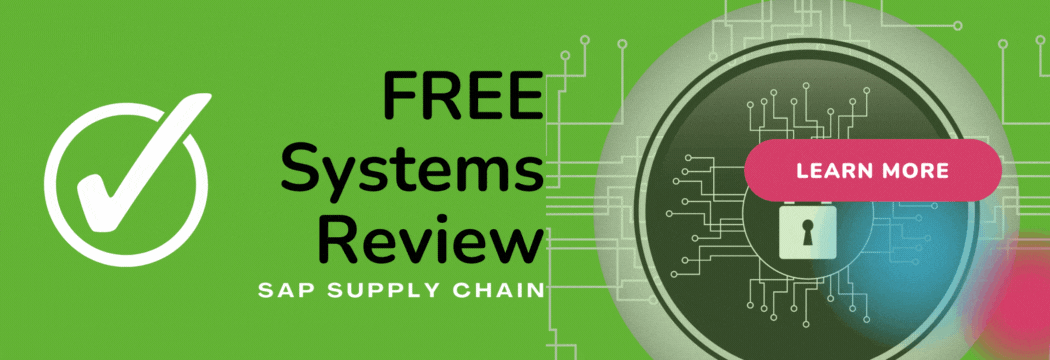SAP Transport Management (TM) Integrated with SAP EWM
%20Integrated%20with%20SAP%20Extended%20Warehouse%20Management%20(EWM)%20(1).webp)
There is a constant expectation to align supply requirements with the ever-changing customer demands, and transportation management is no exception. SAP-run organisations must be capable of proactively protecting against supply risks whilst constantly developing core integrated processes to survive and grow in their fast-evolving sectors.
Previous Rocket blog posts have covered the way in which technology is transforming the warehouse. We’ve looked at how Extended Warehouse Management (EWM) drives efficiency, driving operational excellence with S/4 HANA, and why HANA is a game-changer for EWM.
Transportation is very much an integral part of the much larger supply chain execution jigsaw. When you consider systems that have been bolted together, they can create an absolute administration minefield, with users having to check all details have transferred between systems and with users having to rekey information into many core systems to enact the most simplistic of processes.
Reducing Data Complexity
Data processing and management becomes ever more complex with key users across the organisation finding it harder to source critical information fast. The risk associated with this in a society where people expect split second decisions is phenomenal and does not bear thinking about! Systems which therefore provide a seamless and automated integration path drive continuous improvement and competitive advantage to new heights.
SAP’s Supply Chain Execution platform comprises and combines the following elements:

- Functional holistic and vertical processes
- Integrated Support for end-to-end processes
- Connected real-time insight, network communication and collaboration
Therefore, when looking to achieve heightened customer satisfaction, integration between transport and warehousing processes is key to ensure a seamless process for driving maximum efficiency.
Collaboration Improvement
Collaboration is often referred to as the force behind effective supply chain management and may form the ultimate core capability. However, there is a widespread belief that few organisations have truly embraced its potential. So, when you take a closer look at processes standardising documentation flow, enabling full visibility from a traceability standpoint across TM into EWM alone decreases data complexity and can improve collaboration within the organisation.
Direct real-time integration of SAP TM with EWM incorporates standard document flow and change control. As freight documents are created and the warehousing processes commence ongoing changes are captured, updating all documents in the flow right through until the point of loading. Administration time is minimised along with any requirements to manually key in information, vastly improving document accuracy and in turn driving optimum customer satisfaction.
End to End Process
The inbound delivery for example facilitates the delivery of goods from manufacturing hubs or suppliers into a central warehouse location. In EWM, the inbound delivery captures the detail at a very granular level, covering the following processes:
- Unloading the delivery
- Canceling the ‘unloading of the delivery’
- Placing the delivery into stock (put away)
- Canceling the ‘delivery put away’
- Adjusting the delivery quantity to the quantity posted in the goods receipt (in case of over delivery or under delivery
- Adjusting the delivery quantity and the transferred quantity
Key Information on the inbound delivery would be as follows, while statuses confirm the state of ongoing process completion:
- ASN Number (Advanced Shipping Notification)
- Dates / Times
- Specific Locations
- Quantities
- Handling units – Vehicle identification number
- Batches/Serial Numbers
- Warehouse door
- Unloading point
- Vehicle details
Inbound deliveries from EWM transfer into TM as order based delivery requirements.
The benefit of the transport management cockpit is that it allows for standard and central visibility of all transport management tasks plus SAP TM considers load sequencing and resource utilisation, taking into consideration a wide variety of background rules optimising freight into available resource.
Integrated Processes
Carrier collaboration allows for key details to be shared with carriers. Once carriers are committed to covering the deliveries EWM takes over, focusing on dock appointment scheduling and ensuring that the carrier has an appropriate time slot to deliver goods, avoiding the need for unnecessary delay or financial penalty. Appointments can be created with expected vehicle arrival times along with tolerances (+/- 30 mins) allowing for optimum vehicle turnaround time. Availability of warehouse personnel, resource and bay doors are taken into consideration within this process. As carriers physically arrive actual details, for example timings, are recorded within EWM. Further extending data visibility to warehouse staff, the inbound delivery warehouse monitor provides a central dashboard that confirms details of all the deliveries expected along with the statuses, meaning that responsibility is shared and KPI monitoring/expectation actions are visible. This enables inbound stock to be booked into the warehouse, while incoming customer orders are then transferred to TM for outbound and final mile delivery processing – seamless!
With more and more customers placing online orders the importance of integrated processes is key in allowing for the timely provision of solution options. Integrated transport and warehouse management systems interact seamlessly in the background to confirm product location and availability, and marry this up with vehicle resource based on optimum cost and performance.
Rocket Consulting have demonstrable success spanning nearly two decades of SAP Transportation Management implementations and continually draw on our ever-expanding experience tailoring solutions to client’s specific requirements driving best practice methodologies, optimum efficiencies and maximum customer performance.
Highlights
- Integrating processes brings access to real-time data to the logistics function, allowing for the timely provision of solution options
- Real-time data enables unprecedented insight and analysis, driving efficiency at the same time as enhancing customer service
- Connecting transport hubs and warehouses in real-time paves the way for intelligent logistics solutions and the optimum use of resources



